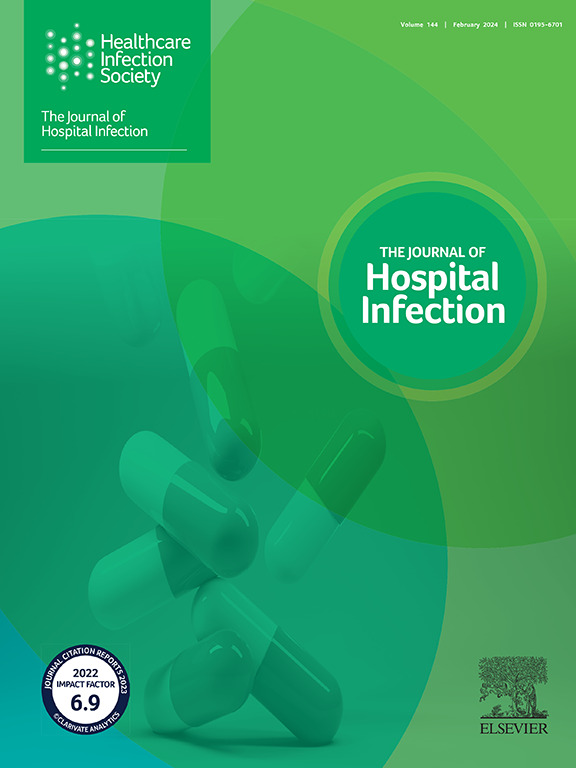Hygiene issues in urinal bottle use in Danish nursing homes without bedpan washers: a qualitative interview study with healthcare assistants and assistant nurses caring for residents with and without catheters
IF 3.1
3区 医学
Q1 INFECTIOUS DISEASES
引用次数: 0
Abstract
Background
Three decades ago, Danish nursing homes began transforming to create more home-like environments, eliminating bedpans to deinstitutionalize care facilities. This led to the closure of auxiliary rooms, including sluice rooms. However, the continued use of urinal bottles without adequate cleaning facilities has increased hygiene concerns and health risks. This disparity between the home-like atmosphere and insufficient sanitation infrastructure poses challenges to delivering safe care.
Aim
This study aimed to explore the practices, challenges, and perceptions of nursing home staff regarding the handling of urinal bottles.
Methods
Qualitative, semi-structured individual interviews with nursing home staff were employed, to gain insights into their daily handling of urinal bottles. Participants (N = 8) were recruited from four nursing homes in one Danish municipality.
Findings
Results revealed that staff employed various cleaning methods and lacked clear guidance from specific protocols. Instead, cleaning methods often relied on personal routines. Protective equipment is vital for safeguarding staff, residents, and colleagues against pathogens; however, staff reported difficulties in determining appropriate equipment for different situations. Many practices were based on individual beliefs about proper workflows, highlighting the need for clear guidelines.
Conclusion
In Danish nursing homes, the lack of standardized procedures and appropriate cleaning equipment results in unhygienic handling of urinal bottles. Staff often fail to recognize these as infection risks, despite clear links to urinary tract infections and the vulnerability of residents. This study highlights the urgent need for national guidelines, improved infrastructure, and a shift toward safe, sustainable, and evidence-based cleaning practices.
丹麦无便盆洗衣机的疗养院中尿壶使用的卫生问题:一项对护理有和没有导尿管的居民的保健助理和助理护士的定性访谈研究。
导读:三十年前,丹麦的养老院开始转型,创造更像家的环境,消除便盆,使护理设施去机构化。这导致包括水闸室在内的辅助室关闭。然而,在没有适当清洁设施的情况下继续使用尿壶,增加了卫生问题和健康风险。像家一样的环境和不足的卫生基础设施之间的差距给提供安全护理带来了挑战。本研究旨在探讨养老院工作人员在处理尿壶方面的做法、挑战和看法。方法:本研究采用定性的、半结构化的个别访谈,对养老院工作人员进行访谈,以了解他们日常处理尿壶的情况。参与者(n=8)从丹麦一个自治市的四家养老院招募。结果:调查结果显示,工作人员使用的清洁方法多种多样,缺乏具体规程的明确指导。相反,清洁方法往往依赖于个人习惯。防护设备对于保护工作人员、居民和同事免受病原体侵害至关重要;但是,工作人员报告说,在为不同情况确定适当的设备方面存在困难。许多实践都是基于对适当工作流程的个人信念,强调了明确指导方针的必要性。结论:在丹麦的养老院,缺乏标准化的程序和适当的清洁设备导致不卫生的处理尿壶。工作人员往往没有认识到这些感染风险,尽管与尿路感染和居民的脆弱性有明显的联系。这项研究强调,迫切需要制定国家指导方针,改善基础设施,并转向安全、可持续和基于证据的清洁实践。
本文章由计算机程序翻译,如有差异,请以英文原文为准。
求助全文
约1分钟内获得全文
求助全文
来源期刊

Journal of Hospital Infection
医学-传染病学
CiteScore
12.70
自引率
5.80%
发文量
271
审稿时长
19 days
期刊介绍:
The Journal of Hospital Infection is the editorially independent scientific publication of the Healthcare Infection Society. The aim of the Journal is to publish high quality research and information relating to infection prevention and control that is relevant to an international audience.
The Journal welcomes submissions that relate to all aspects of infection prevention and control in healthcare settings. This includes submissions that:
provide new insight into the epidemiology, surveillance, or prevention and control of healthcare-associated infections and antimicrobial resistance in healthcare settings;
provide new insight into cleaning, disinfection and decontamination;
provide new insight into the design of healthcare premises;
describe novel aspects of outbreaks of infection;
throw light on techniques for effective antimicrobial stewardship;
describe novel techniques (laboratory-based or point of care) for the detection of infection or antimicrobial resistance in the healthcare setting, particularly if these can be used to facilitate infection prevention and control;
improve understanding of the motivations of safe healthcare behaviour, or describe techniques for achieving behavioural and cultural change;
improve understanding of the use of IT systems in infection surveillance and prevention and control.
 求助内容:
求助内容: 应助结果提醒方式:
应助结果提醒方式:


